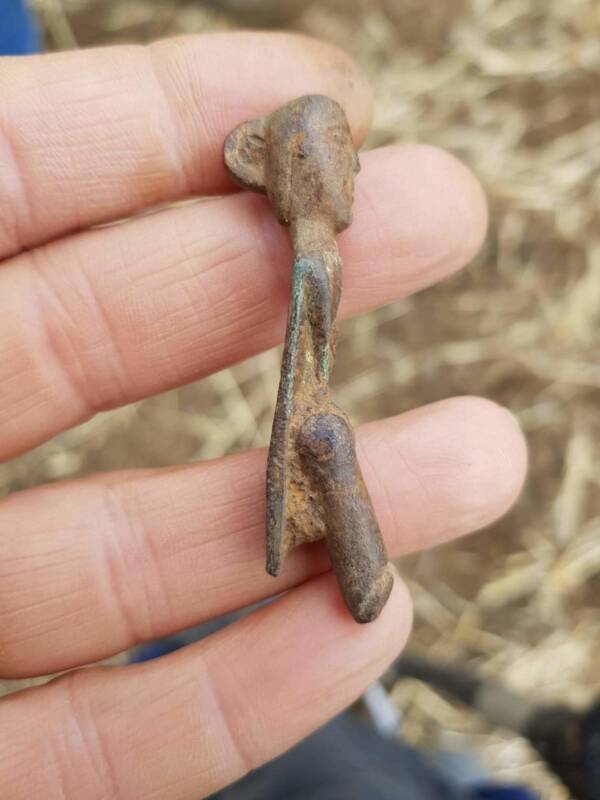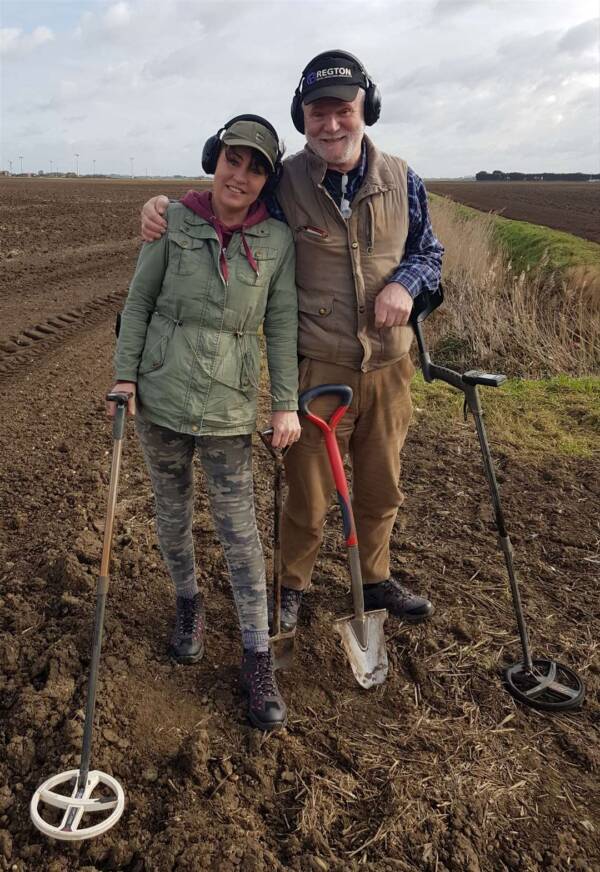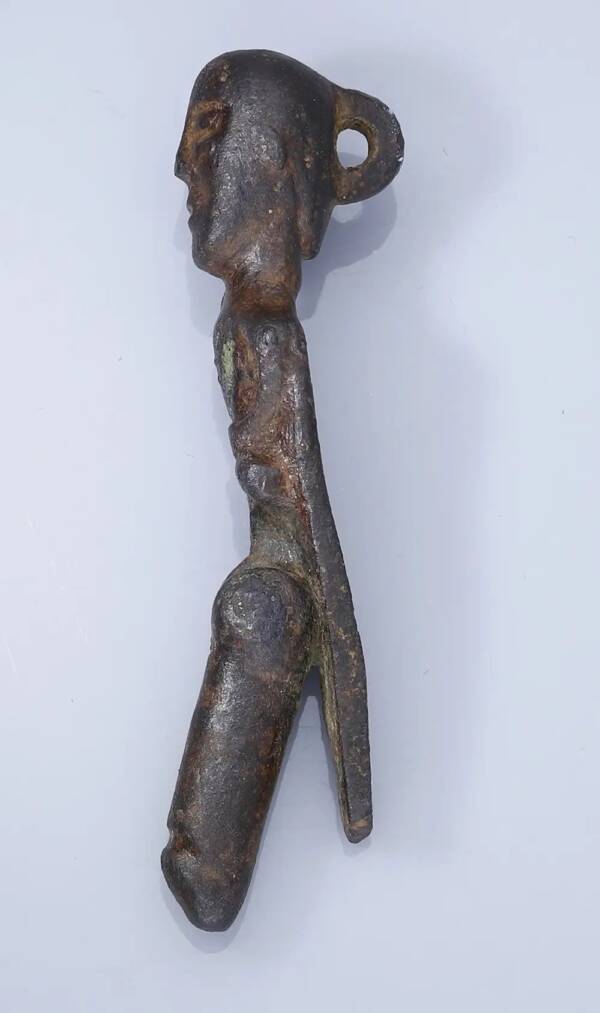The figurine dates to the first century C.E. and was likely a representation of a fertility god.

NoonansPhallic symbols like the one found on this ancient Celtic figurine were fairly common in the ancient world.
While combing through a field in Haconby, Lincolnshire in 2022, Paul Shepheard suddenly got a signal from his metal detector. His wife, Joanne, had just found a Medieval penny, so Paul eagerly dug into the dirt — and unearthed a 2,000-year-old figurine with an oversized phallus.
“What I love about metal-detecting is that absolute surprise of what you find, and this certainly came out of the blue!” Shepheard raved in a statement from the auction house Noonans, which is selling the object.
Shepheard, a 69-year-old retired processing consultant, has been a metal detectorist for 25 years. He explained that he and his wife thought that the tiny but well-endowed figurine was Roman at first.

NoonansPaul and Joanne Shepheard with their metal detectors.
“We initially thought it was Roman as the Military wore phallic pendants,” Shepheard explained. But the object Shepheard found had a hinge, and Roman pendants didn’t have moving parts. Indeed, Noonans determined that the figurine is Celtic in origin, and likely dates back to the first century C.E.
The auction house believes that the figurine, which is about two inches tall, was likely some kind of fertility symbol. Hundreds of years ago, an ancient Celt may have worn it as a belt buckle or used it as a scabbard for their sword.
“[T]his is a representation of a fertility god, probably based on the Roman god Mercury as he is holding a purse in his left hand,” Nigel Mills, an expert on coins and artifacts at Noonans, explained in the statement.

NoonansThe pendant is 2,000 years old and may have been used as a belt buckle.
“This male figure with its hinged oversized phallus would have had symbolic powers of good luck and warding off evil spirits and may have served as a locking mechanism as a buckle to hold a belt and scabbard for a sword. There is nothing quite like it, I am hoping it will attract a lot of attention.”
The figurine has indeed attracted a lot of attention and Noonans expects that it will sell for between $950 and $1,400 when it goes to auction this week. But for ancient people, phallic imagery was fairly commonplace.
As Ancient Origins reports, Romans frequently carried phallic symbols with them for good luck — which is why Shepheard originally thought that the figurine he found was Roman. But the Celts also used phallic imagery.
Their forest god Cernunnos was frequently depicted as having antlers and a large phallus, and ancient Celts wore phallic imagery to promote fertility in women and the abundance of their harvests.
As a result, it’s fairly common for metal detectorists in England to come across phallic imagery as they scour fields for archaeological treasures. In 2020, a 73-year-old retiree discovered a silver penis pendant from the Roman era. Though hundreds of other penis pendants have been found, they’re usually copper or bronze, which made her find especially exciting.
Experts stated at the time that the silver used in the making of the pendant might have reflected its wearer’s wealth, but perhaps also an ancient belief in the magical properties of silver.
For Paul Shepheard, though, the Celtic figurine with the oversized phallus is more than just an incredible find. He hopes to use the proceeds from its sale for a special purpose — a vacation for his wife and mother-in-law.
After reading about the English couple who stumbled across a Celtic figurine with an oversized phallus, learn about the history of the phallus in Roman art. Then, discover more about erotic art in the ancient world.





